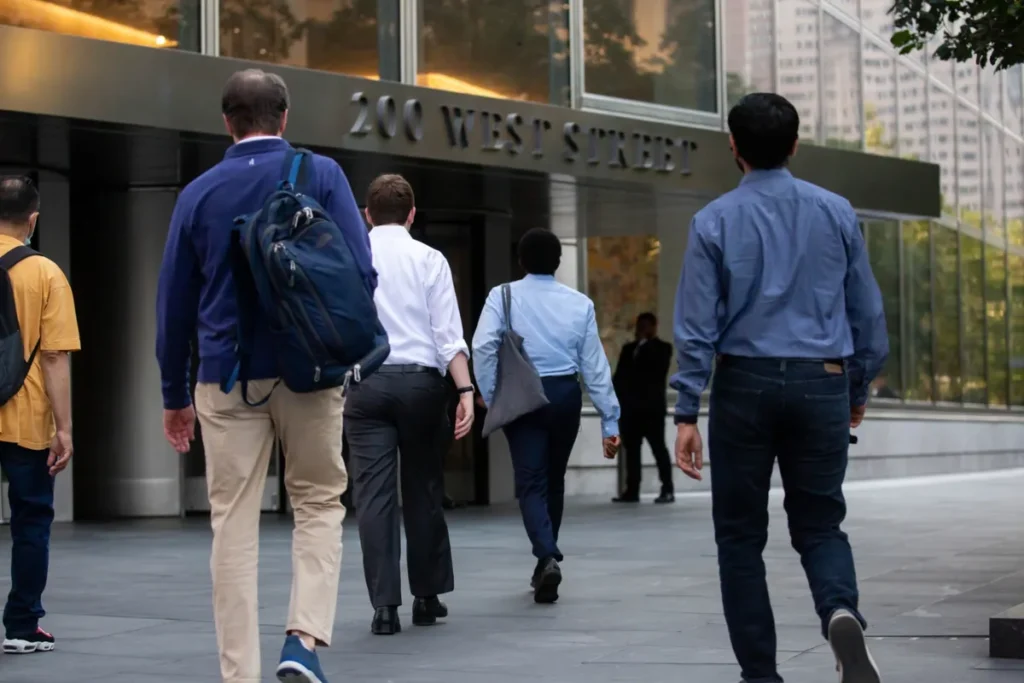Newsmatro

The annual Labor Day signal for a return to “normal” in offices across the United States has become a recurring theme since 2020. However, this year, as companies push for a full return to the pre-pandemic office routine, a growing number of employees are pushing back, citing various reasons for the resistance.
The Persistent Push for a Full Office Return:
Companies like Goldman Sachs, Amazon, JP Morgan Chase, Apple, Meta, BlackRock, and Disney are among those insisting on at least a partial return to in-office work. Even firms that previously embraced remote work options, such as Salesforce, have backtracked on their policies.
Despite years of efforts to encourage employees to return to the office, more than half of workers still remain absent from the workplace full time, according to The Flex Report, a tracker of employment trends across 4,000 global companies. One-third of employees now favor a hybrid remote work setup.
Redefining the Workplace Reality:
Office vacancy rates have surged to record highs this year, surpassing 20% in major cities. Moreover, a recent Bankrate survey reveals that 81% of employees aspire to maintain a permanent four-day workweek.
Given this evolving landscape, it is becoming increasingly clear that returning to the traditional five-day in-office workweek is unlikely. The pre-pandemic work schedule is being reevaluated and reimagined as employees seek greater flexibility and work-life balance.
The Employee Perspective:
While employers emphasize the importance of in-person collaboration, mentorship, and spontaneous idea generation, employees are pushing back for several valid reasons. Remote work has proven to boost productivity, eliminate daily commutes, and provide a more flexible work environment.
Many argue that office mandates seem arbitrary and imply a lack of trust from employers. The concept of a four-day workweek, which has shown success in studies conducted globally, offers improved work-life balance and reduced stress.
Diversity and Flexibility:
Remote work policies have contributed to a more diverse workforce, as women and individuals of color, especially those with family responsibilities, prefer remote options. LinkedIn analysis reveals that job listings for remote positions attract a more diverse pool of candidates.
Furthermore, the flexibility of remote work has led to a surge in women’s participation in the workforce, breaking records in recent months. This trend is attributed to both remote work options and the resumption of in-person schooling and childcare services.
A Post-Pandemic Growth Mindset:
The significant upheavals experienced during the pandemic and other stressors have led to a profound change in individuals’ lives. Psychologists studying post-traumatic growth (PTG) suggest that people may be primed to apply this growth mindset to the workplace.
Rather than attempting to return to a pre-pandemic schedule, employees may be inclined to “bounce forward,” embracing change and opportunities in the workplace. This shift in mindset could result in a reimagining of the workplace structure and norms.
The Role of Employers:
Employers are encouraged to engage employees as partners in reshaping the workplace. Effective communication and empathy are key to understanding employees’ needs and preferences. Allstate, for example, polled its employees on remote work preferences and saw a significant increase in diverse hires as a result.
In summary, the ongoing evolution of the workplace calls for a departure from the notion of “bouncing back” to pre-pandemic norms. Instead, this moment presents an opportunity to build a new and more flexible way of working that aligns with the changing needs and expectations of employees. While the physical office may not disappear entirely, it is imperative to reevaluate and adapt to the evolving work environment.